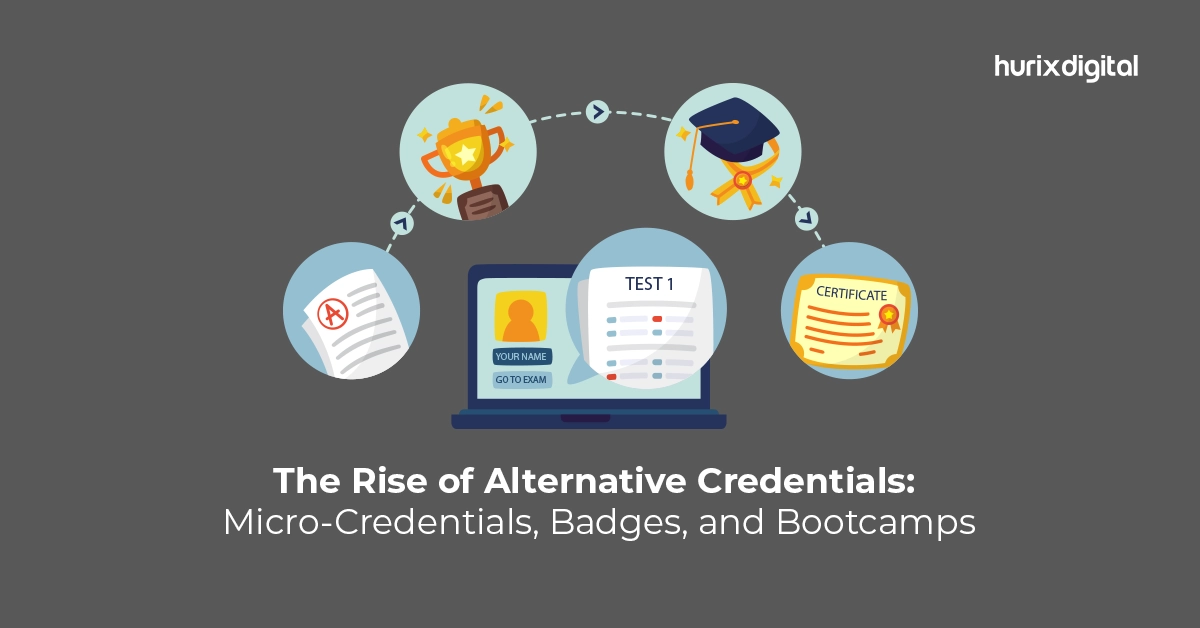
Debunking the Top 7 eLearning Myths
Summary
This article debunks seven eLearning myths, such as it being for amateurs or expensive, and highlights its numerous benefits like flexibility, cost-efficiency, and accessibility.
eLearning implies enriching knowledge through electronic media, such as online tutorials, live video feeds, etc. In recent times, eLearning has experienced a surge in popularity owing to its advantages, such as convenience, flexibility, cost-efficiency, and self-paced learning. As such, the revenues of eLearning providers are projected to surpass $257.70 billion by 2028, and this growth will compound by 8.61% per annum.
Despite this, many prospective learners are scared off by myths shrouding eLearning. This post attempts to debunk such misconceptions surrounding this passive mode of knowledge assimilation. eLearning throws open the doors of a treasure trove of excellent knowledge that anyone can access anywhere, anytime.
Table of Contents:
- Dispelling the Common Myths Orbiting the eLearning Domain
- Myth #1. eLearning is for Amateurs Only
- Myth #2. eLearning Doesn’t Cater Effectively to Different Learner Types
- Myth #3. eLearning is Expensive
- Myth #4. Communication with the Instructor is Limited
- Myth #5. Corporate Employees Find it Difficult to Navigate eLearning Modules
- Myth #6. Networking Opportunities are Missing
- Myth #7. Only Specialized and Advanced Learning Programs are Available
- Way Forward
Dispelling the Common Myths Orbiting the eLearning Domain
The prominent role played by online knowledge forums and courses in fulfilling the learning and development needs of students, employees, and other aspirants is indisputable. However, few people tend to believe the flimsy myths targeted at eLearning to undermine its value. You can get factual insights below that refute the credibility of such myths.
Myth #1. eLearning is for Amateurs Only
This myth is squashed by the fact that many renowned online platforms and globally famed universities offer curated eLearning programs held in high esteem by reputed organizations.
Harvard University, for example, offers almost 143 online courses that beat the hallmark of its Ivy League. Online programs in Data Science, Artificial Intelligence, etc., from leading authoritative bodies, are helping job seekers land lucrative opportunities. The eLearning degrees of accredited providers carry the same weight as conventional ones.
Also Read: Crafting Your eLearning Journey: 7 Simple Steps to Course Development
Myth #2. eLearning Doesn’t Cater Effectively to Different Learner Types
This myth is debunked by the knowledge revolution that eLearning has ushered in with its modules that make intellectual enrichment more inclusive and accessible for all. eLearning portals offer engaging and visually compelling content for students, corporate employees, and candidates suffering from visual, auditory, motor, and cognitive impairments.
The eLearning content can be tailored and configured to the targeted audience’s needs to facilitate optimum upskilling. Multimedia content, audio narrations, infographics, reading aids, etc., promote knowledge retention and help learners dive deeper into the conceptual aspects. Learners can also interact with the content and view it from different perspectives for easy understanding.
Myth #3. eLearning is Expensive
This myth is not true because eLearning significantly reduces the cost of upskilling compared to traditional classroom-style sessions. Some people are under the impression that eLearning is costly because they think that heavy investment is needed in cameras, laptops, video-conferencing software, course licensing fees, etc. The truth is that online modules can be accessed from a simple smartphone with an internet connection.
Internet rates are going down each passing day, and electronic gadgets, too, are becoming cost-competitive. Courses can be downloaded to your device for access anytime. Course fees are affordable and cheaper than conventional ones. As the courses can be accessed from the comforts of your home, you need not spend on traveling to the classroom site or renting a room near an educational institute. You are not compelled to follow a strict schedule, which means you can go about attending to other important things.
Hence, your income from your job doesn’t suffer because of your studies. Institutions can keep course fees competitive because they don’t need to invest money in infrastructure, payment for regular teachers, classroom upkeep, administration, documentation, support staff, etc.
Learning becomes self-paced with eLearning.
Myth #4. Communication with the Instructor is Limited
This myth is not true. eLearning courses are becoming increasingly interactive, and instructors often host live sessions to gather learners’ feedback. Learners can exchange views with instructors after every session through videoconferencing tools.
If the learner is having difficulty understanding a topic, the instructor can use authoring tools to change the content layout to make it more learner-friendly. If a live session is ongoing, learners can digitally raise their hands to have their doubts cleared in real-time.
One-to-one communication with an instructor through video conferencing software like MS Teams is possible. Instructors can offer summative and formative feedback to learners after assessments through eLearning portals also.
Myth #5. Corporate Employees Find it Difficult to Navigate eLearning Modules
Corporate training is being taken to the next level with technology-leveraged eLearning solutions. Hence, this myth doesn’t hold any ground. With the advent of Artificial Intelligence and Machine Learning, animated courses have become more realistic. Any complex situation can be visualized with ease from all possible perspectives. This offers unparalleled actionable insights into the intricacies of complex objects that traditional textbook-styled courses can never think of.
Suppose an organization has introduced a new machine with cutting-edge features. The eLearning course provider can author content that offers 360-degree views into the machine’s dynamics. eLearning modules can recreate a simulator-like feel through rich multimedia, virtual reality, etc. eLearning offers nuanced yet holistic upskilling opportunities, which are ideal for workforce learning.
eLearning reduces attrition as employees get the scope to upskill themselves in-house free of cost. Further, it is a myth that the shorter attention span of workers will induce boredom in them. The attention-grabbing visuals of online modules can spark interest intuitively in employees.
Myth #6. Networking Opportunities are Missing
This myth is a common misconception. The truth is that leading eLearning course providers frequently organize conferences, seminars, and webinars where learners can interact with experienced professionals and industry experts in the knowledge domains they pursue.
Virtual classrooms are not dominated by bland lectures only. Video conferencing tools like Zoom, MS Teams, etc. facilitate real-time peer-to-peer interactions. Collective discussions and collaboration over group projects in virtual mode are common. Resource sharing is also enabled.
Myth #7. Only Specialized and Advanced Learning Programs are Available
eLearning, during its initial phases, had its focus on management and other advanced-level programs only. This was during the transition period when learners were slowly adapting themselves to the virtual learning mode.
Now, the picture has changed completely. eLearning programs are available for a wide array of subjects and cover all knowledge domains. You can easily find bespoke programs for your chosen niche.
eLearning is now available for microlearning, mobile learning, corporate coaching, mentoring, upskilling, knowledge sharing, leadership development, focused training, cultivation of personal skills, etc. Apart from these, the majority of diploma, graduate, postgraduate, and school-level learning programs are available in eLearning mode.
Also Read: Top 5 eLearning Companies in the UK That You Should Know About
Way Forward
You can now convince yourself of the multifarious advantages of eLearning, as all the myths obscuring its usability quotient are just rumors and untenable. eLearning is progressively becoming the universal medium of knowledge acquisition. Learning modules can be accessed 24/7 from anywhere and from any connected device. It is high time that learners shed their inhibitions and start enjoying the unparalleled flexibility offered by eLearning to nurture their intellectual instincts.
Hurix Digital offers expert assistance in developing tailored eLearning programs that can resonate well with your targeted audiences. We facilitate the quick creation of multimedia-rich and immersive learning modules that can intellectually empower learners and help them develop a conceptual grasp of topics of different difficulty levels.
Want to learn more? Contact us today!

Performance, Results, Growth, and Life-Long Learning define my professional life. I am passionate about making workplace learning planful, purposeful, and impactful. I take pride in partnering with clients and bringing them the best in learning design and creating solutions that address business challenges.







